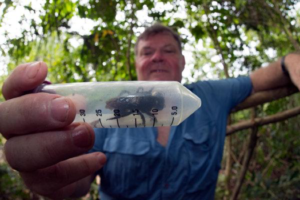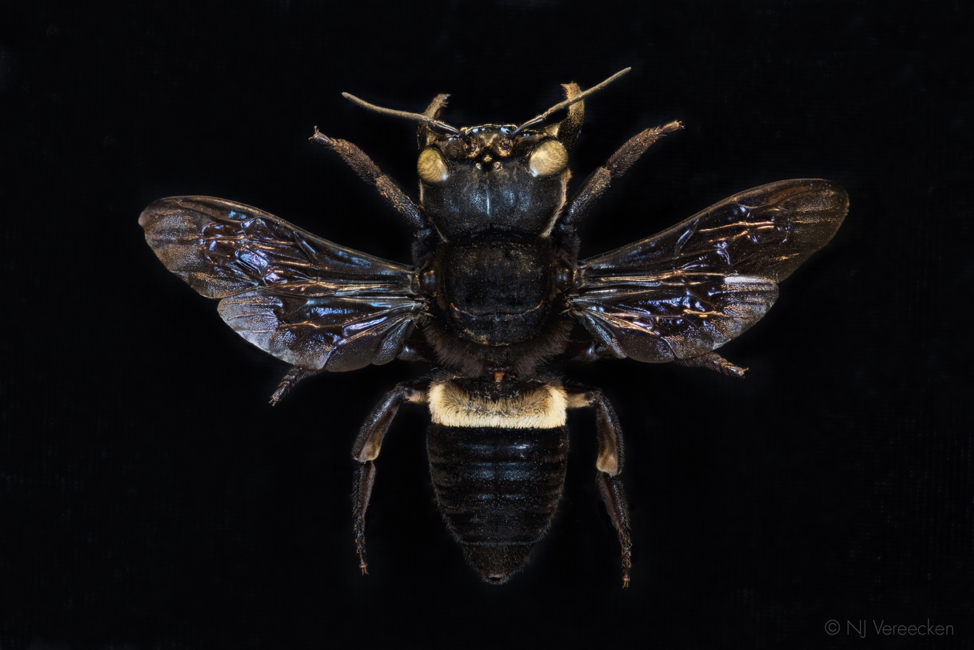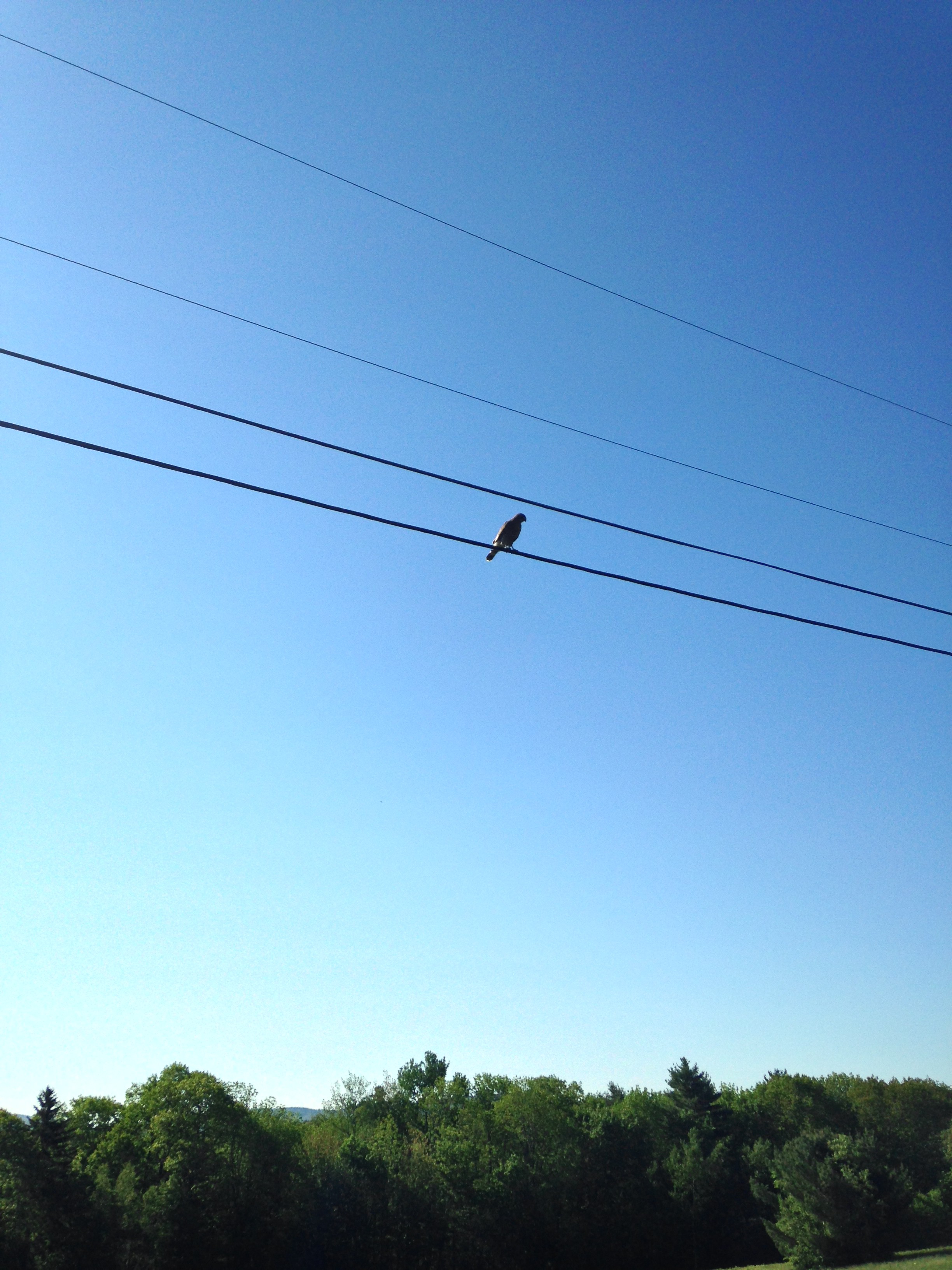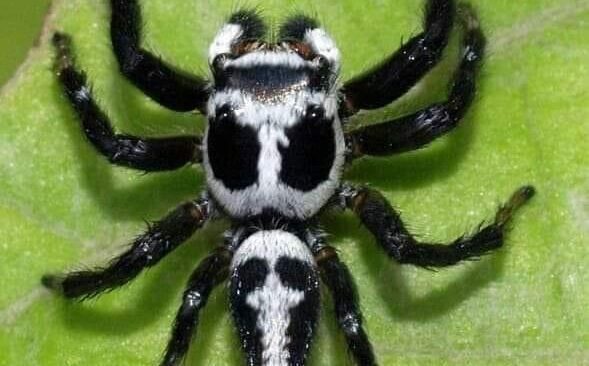In January on a small archipelago in Indonesia Clay Bolt, a nature photographer, and his team captured a female Wallace’s giant bee (Megachile pluto), a species so elusive it was thought to be extinct. Only documented in 1859 by Alfred Russel Wallace for whom the bee is named and again in 1981 by Adam Messer, the bee is the largest and perhaps most elusive bee species. The Wallace’s giant bee is around one inch long with a wingspan of two and a half inches, equivalent to the size of a jumbo paperclip! Scientists are enthused about the recent find, but the bees’ rediscovery raises concerns about potential poaching and future conservation efforts (1).
Last year, a Wallace’s giant bee specimen sold on ebay for over $9000. Despite the bee being listed as vulnerable by the International Union for Conservation of Nature (ICUN), there are no international protections on the species (1). The lack of legislation regarding the species sheds light on the greater issue of insect conservation and efforts to reduce the rapid decline of insect biodiversity worldwide. Insects are the most species-rich group of animals making up over 80% of terrestrial species. Over 91,000 insect species have been identified in the United States alone(2). For

comparison there are only 2,972 native vertebrates in the United States, and this includes all mammals, birds, reptiles, amphibians, and fishes(3). Despite the huge contribution of insects to global biodiversity, only 75 insect species have any protection under the Convention on International Trade in Endangered Species (CITES), and 84 insect species are protected under the US Endangered Species Act (4,5). CITES is an international agreement between governments that aims to protect threatened species from international trade. Despite the important work CITES does, the convention has long been criticized for their bias in protecting vertebrate species. The Endangered Species Act is a US law that aims to protect and restore the ecosystems which threatened species depend on in America. Both CITES and the Endangered Species Act greatly underestimate the amount of threatened insect species. A recently published paper claimed that around 80% of insect species have been in decline in that past decade(1).
These staggering figures have serious implications for the many ecosystem services that insects provide for us. Around 75% of flowering plants are pollinated by insects making them important components of both plant health and food production. Insects are also critical for decomposition(6). They help to turn our waste into soil! Insects are small but have a mighty role in maintaining the circle of life. However, not only big organizations and governments can play a

role in insect conservation. Everyone can contribute to helping insects thrive in our environment. Generally, insects are greatly understudied and entomology (the study of insects) is under-funded. Therefore, participating in citizen science projects such as Bugs in our Backyard is super important in helping scientists discover more about little critters. Additionally, anyone can help their backyard residents by providing them homes and food. Two easy ways to do this are to grow native plants that pollinators love in your own pollinator garden and to leave your leaves in the fall. Many insects use leaf litter as their homes during the cold winter months, and so by raking less you are helping insects to stay alive over the winter. Finally, check out some websites that are dedicated to invertebrate conservation such as Xerces Society or Pollinator Partnership for more great ideas on how to bee insect friendly!

Useful Resources:
Works Cited
- https://www.nationalgeographic.com/animals/2019/02/worlds-largest-bee-rediscovered-not-extinct/
- https://www.si.edu/spotlight/buginfo/bugnos
- https://www.currentresults.com/Environment-Facts/Plants-Animals/number-of-native-species-in-united-states.php
- https://www.cites.org
- https://www.entsoc.org/sites/default/files/files/Science-Policy/ESA-PolicyStatement-Endangered-Species.pdf
- https://www.nationalgeographic.com/animals/2019/02/why-insect-populations-are-plummeting-and-why-it-matters/




